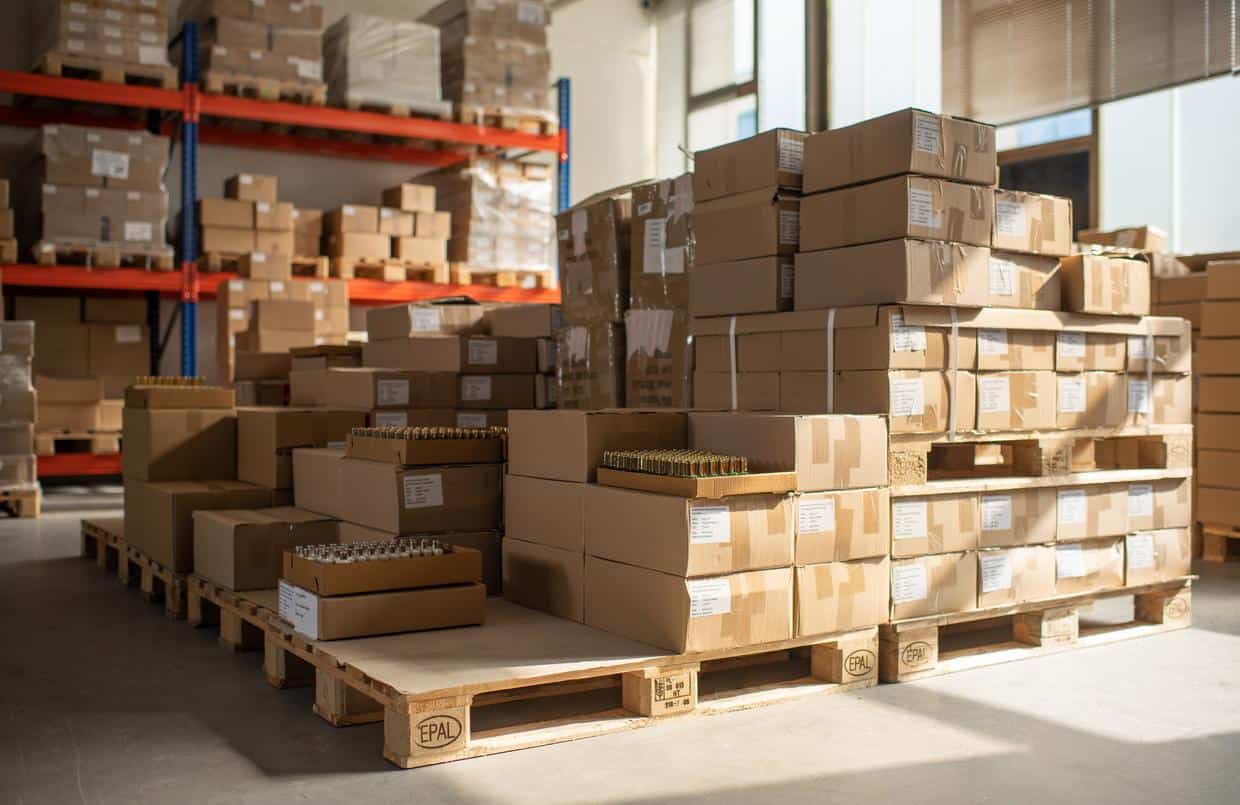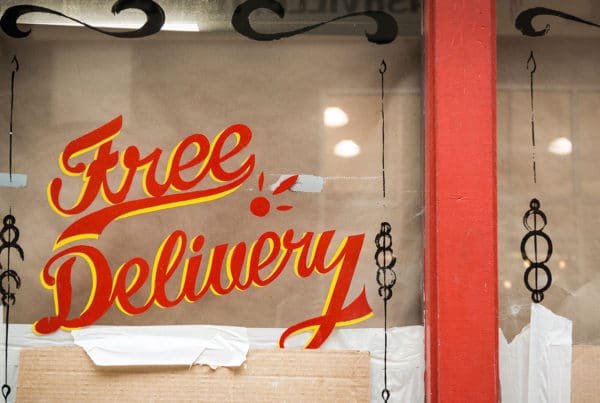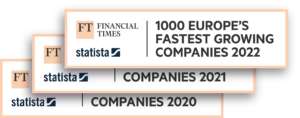Looking for a faster, more efficient way to handle your e-commerce business’s logistics?
You may have heard about third-party logistics (3PL) providers, but aren’t sure where to start.
This quick guide helps you decide whether 3PL is right for your business, which services 3PL includes, and what to look for when choosing a 3PL partner.
What is a 3PL?
Curious about what a 3PL is and how it can enhance your business? A 3PL, or third-party logistics provider, is a company to which you can outsource some or all of your logistics operations. This includes a range of services, such as warehousing, inventory management, shipping, and delivery. A 3PL leverages its network and resources to manage your fulfillment processes, working directly with multiple carriers to offer the best shipping options for your customers. This setup allows you to scale your operations efficiently without having to handle every step of the logistics process internally.
Difference Between 3PL and 4PL:
While a 3PL handles specific logistics tasks, a 4PL, or fourth-party logistics provider, manages your entire supply chain. Think of a 4PL as the logistics mastermind who oversees everything, coordinating multiple 3PLs and carriers to ensure smooth operations.
A 4PL works with various 3PLs and carriers to optimize the entire logistics process. This added layer of management can be transformative for large retailers with complex shipping needs, offering a single point of contact and a strategic partner to streamline all aspects of logistics.
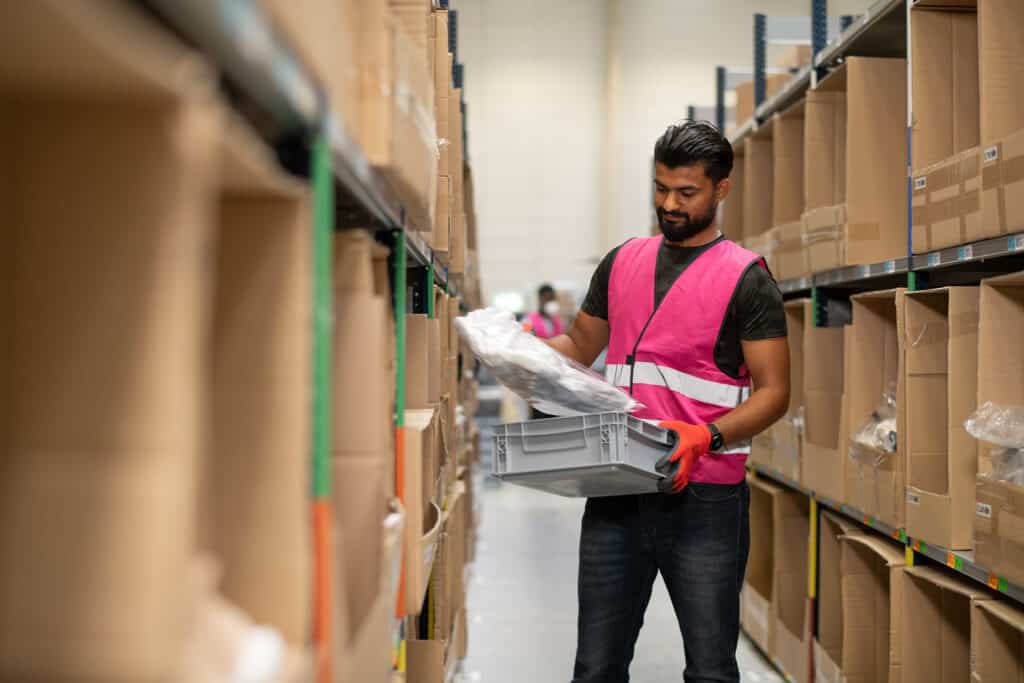
Which services do 3PL companies offer?
Warehousing: When you outsource your warehousing to a 3PL, incoming goods from your suppliers are received and stored directly at the 3PL’s warehouses. Since 3PLs often operate large networks of warehouses, your goods are well distributed throughout the markets where you operate. This ensures greater proximity to your customers.
Picking and packing: Most 3PLs allow you to integrate their order management software or API directly into your online shop. When your customer places an order, the order information automatically transfers to the 3PL, who then picks the articles from the warehouse and packs them for shipping. Most 3PLs use heavily automated and robotic processes to ensure fast, error-proof picking and packing.
Inventory management: You can also count on 3PLs to monitor and replenish your stock. They work directly with your suppliers to ensure adequate stock levels, including preparing for peak periods based on data analytics.
Shipping and receiving: 3PLs prepare your orders for shipping, including generating accurate shipping labels, customs declarations and other shipping-related documents. They dispatch your parcels in bulk through the best-suited carriers, based on your shipping preferences. They also receive returning parcels from your customers, and incoming shipments from your suppliers.
Kitting and customization: 3PLs can also support you if you sell products that need to be kitted or customized before shipping. This includes products such as home-assembly furniture or DIY products that consist of multiple SKUs which need to be combined into one package before shipping to the customer (kitting).
3PLs also have the facilities to customize orders based on customers’ wishes (such as choosing the right color option before shipping). They can also customize your packaging or pack your items according to special instructions. This enables you, for example, to include a free gift with certain purchases, so you can optimize your customer’s unpacking experience, even though the entire packing and shipping process is outsourced.
For more insights on tailoring customer experiences in different markets, explore our in-depth tips on localizing your customer experience for international markets.
Reverse logistics (return shipping): 3PLs can be integrated into your return shipping process. This means when a customer requests a return, the 3PL takes care of the entire shipping process, based on your policy. This can include generating return shipping labels, handling incoming shipments, sending replacements or automatically initiating your company’s refund process.
FTL and LTL freight shipping: If you ship large shipments in full truckloads (FTL) or less-than-full truckloads (LTL), a 3PL can manage the process, including repacking and consolidating your LTL shipments for optimal handling and delivery speed.
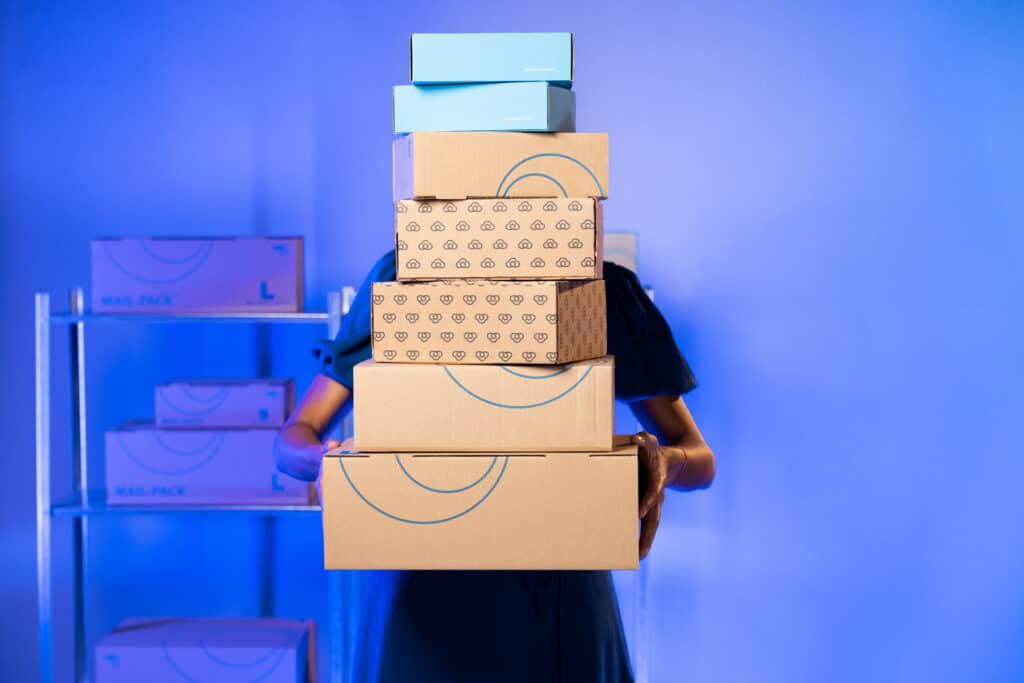
6 signs that you should consider using a 3PL
If you’re considering outsourcing to a 3PL, you probably already have reasons to believe that your current logistics operations could be more efficient.
Here are a few common signs that a 3PL could help you improve your logistics:
- High order volumes: The more orders you fulfill, the more beneficial it will be to work with a 3PL. 3PLs generally have an order minimum of at least 100 orders per month. If you’re fulfilling fewer orders than that, then a 3PL might not be the most affordable option for your business.
- Lack of own storage space: If you’re selling more merchandise than you’re able to store in your current inventory space, then a 3PL can offer you the space you need.
- Need for faster delivery: According to Sendcloud’s most recent E-commerce Delivery Compass, the average consumer expects their online order to be delivered within 3.3 days. If you’re struggling to meet those expectations with your current system, a 3PL can significantly speed up your delivery time.
- Trouble managing peak periods: If you lack the ability to quickly scale up your fulfillment during peak periods, a 3PL can give you the flexibility to handle a surge in demand. They connect you with multiple carriers, so you have back-up options in case one carrier is overbooked.
- International expansion: 3PLs operate large international distribution networks. With the right 3PL, you can ship internationally and access new markets without having to contract with multiple new carriers and partners.
- Complex orders: If picking and packing your orders involves complex processes, such as climate-controlled shipping or kitting multiple SKUs, 3PLs have the automated systems and technologies to streamline the process and speed it up.
What does the 3PL order fulfillment process look like?
- Warehousing: The 3PL receives your inventory at its warehouse and organizes each SKU into its inventory management system.
- Receiving orders: When a customer places an order on your e-commerce website, the order information is forwarded to the 3PL. This may be done manually (your order management team sends a daily order list, for example). Yet to make it even easier, 3PLs can also integrate directly into your web shop’s back end using a tool like Sendcloud. This means order information transfers automatically, with no risk of errors.
- Picking and packing: Orders are picked and packed for shipping. Many 3PL fulfillment centers use state-of-the-art automated systems to quickly pick SKUs when filling an order. This ensures optimal speed and accuracy.
- Dispatch: Packages are prepared for shipping in bulk. The 3PL generates the shipping labels and hands over your shipments directly to the right carriers.
- Tracking: Ideally, the 3PL uses an API integration like Sendcloud’s to automatically synchronize tracking information with your order management software. This ensures you have real-time information about every package. All of ShipBob’s fulfillment centers, for example, use a unified warehouse management system that is connected via a single Sendcloud API integration to multiple carrier systems. As a result, ShipBob, their customers (e-commerce retailers) and the end consumers receive accurate real-time tracking information.
- Returns: 3PLs also receive items returned by customers. These returned items are processed according to your company’s return policy.
“New carrier integrations usually require a lot of time and technical resources. But with the Sendcloud API, we can go live with a new delivery option in minutes.”
Oscar Ziegler, Co-Founder & CEO – Hive
Benefits of using 3PL
Lower overhead costs: 3PLs reduce or eliminate expenses, including the warehouse space, labor and technology that it takes to manage shipping on your own.
Discounts on shipping: Because they ship in high volumes, 3PLs are entitled to the highest discounts that carriers offer. Shipping via a 3PL means you also benefit from those discounts, without the need to negotiate contracts with individual carriers.
Multi-carrier shipping: 3PLs often work seamlessly with numerous carriers, or partner with a multi-carrier solution provider like Sendcloud to compare shipping costs from a variety of carriers. This gives you access to a wide range of leading carriers, so you can offer more options to your customers to meet their expectations.
Full-service logistics: 3PLs can take care of every aspect of your logistics. Most will purchase and print shipping labels on your behalf. In addition to handling your shipments, many 3PLs offer support with your direct marketing activities and even offer custom packaging.
International reach: 3PLs operate networks of fulfillment centers to ensure you’re close to the markets where your company does business. They can also enable you to test new markets without having to commit to a new agreement with a local carrier first.
Better delivery experience: 3PL fulfillment centers are continually serviced by carriers, enabling multiple pickup rounds throughout the day. This direct injection of shipments into the carrier network means faster delivery for customers.
In addition, because of their large networks, 3PLs offer your customers the last-mile delivery experiences they expect. This includes working with preferred local carriers. It also means faster, consistent delivery during peak shipping periods, because 3PLs have more options to choose from in case one carrier is experiencing delays. As a result, you enrich the customer experience and boost retention.
“As carrier costs change over time, and as performance can fluctuate across the seasons and particularly during the busy run up to Christmas, our customers will be safe in the knowledge that we will always give them the most cost-competitive and reliable delivery services in the market.”
Enda Breslin, GM Europe at ShipBob
Streamlined returns: Working with a 3PL simplifies and speeds up your returns process. They can handle every step of the return, ensuring a smoother, more customer-friendly experience.
Data-driven technologies: 3PLs have access to vast amounts of data through their multi-carrier shipping partners like Sendcloud. That means they can provide you with real-time insights into carrier performance, lead times and more, so you can make better decisions when getting your products to the market.
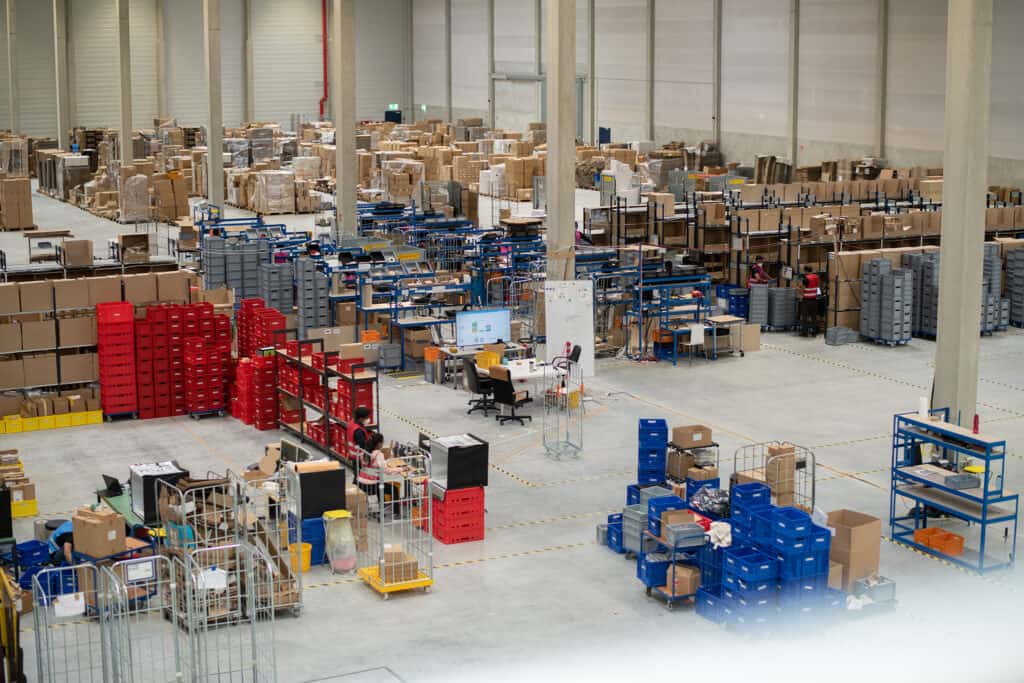
Choosing the best 3PL for your business
When choosing the right 3PL for your e-commerce business, it’s important to consider these factors:
- Location and market proximity: Does the 3PL offer fulfillment centers and carriers where you want to deliver?
- Service level: Do they offer all the services you need?
- Technology: Do they offer modern technology that can be conveniently integrated into your online shop system? This includes useful features like automatic shipping labels and reliable tracking information.
- Multi-carrier: Can they connect you with multiple carriers through a multi-carrier shipping platform to ensure competitive rates, meet customer preferences, and maintain continuity during peak periods?
How Sendcloud supports 3PL Operations
Sendcloud supports third-party logistics (3PL) operations through partnerships with industry leaders like ShipBob. ShipBob operates over 40 fulfillment centers globally and connects more than 7,000 e-commerce retailers to 100+ carriers across Europe via Sendcloud. This integration enables competitive delivery times, including next-day service to the UK, Poland, and Germany.
Similarly, Hive leverages the Sendcloud API to enhance its fulfillment process. By centralizing all data, Hive synchronizes information from customers’ shop systems, unifies inconsistent carrier tracking details, and cross-checks it with fulfillment data. Hive’s custom algorithm further optimizes delivery by analyzing various data points to choose the most suitable carrier for each parcel.
Whether you partner with our 3PL providers or manage logistics in-house, Sendcloud enhances your operations and provides valuable data insights for better shipping rates. Ready to elevate your logistics? Contact us today to get started!
FAQs
What is 3PL in e-commerce retail?
Third-party logistics (3PL) is a shipping solution in which retailers outsource their fulfillment to a specialized 3PL provider. That company manages everything from warehousing, to packing and dispatching orders, to receiving returns. 3PL suppliers have direct relationships with multiple carriers. Because they ship in large volumes, they can negotiate better discounts, which makes them an attractive shipping solution, especially for medium- to large-volume shippers.
For a more comprehensive understanding of what 3pl entails and how Sendcloud can assist in this process, please explore our detailed article here.
What types of companies use 3PL services for their logistics needs?
E-commerce retailers of all sizes can enhance their logistics by partnering with 3PL companies. While any retailer can benefit from 3PL services, those processing at least 100 orders per month see the greatest advantages due to economies of scale—the more you ship, the more you save.
How do you measure 3PL performance?
When you partner with a 3PL, they will generally commit to a service level based on specific KPIs. These are monitored via data analytics. The 3PL will report on their own performance periodically to inform you on whether they are keeping on track in key areas like order fulfillment accuracy, lead time, customer satisfaction and cost control.
What services are typically offered by a 3PL?
3PL providers typically offer:
- Warehousing: Storage and distribution of your products in a network of warehouses.
- Picking and Packing: Automated order fulfillment including picking items and packing them for shipment.
- Inventory Management: Monitoring and replenishing stock levels, often with data-driven insights.
- Shipping and Receiving: Handling shipping preparations, labels, customs, and managing returns.
- Kitting and Customization: Combining products or customizing packaging and orders as needed.
- Reverse Logistics: Managing returns and handling the associated processes.
- FTL and LTL Freight Shipping: Managing full and partial truckload shipments efficiently.
What are the downsides of 3PL?
If your 3PL does not have the right technologies, it can be time-consuming to exchange information with them (for example, manually sending order sheets, packing lists, tracking numbers, etc.). If they do not offer real-time tracking information, it may be difficult to quickly determine the status of an order (for example, if a customer contacts your company to request an update).
